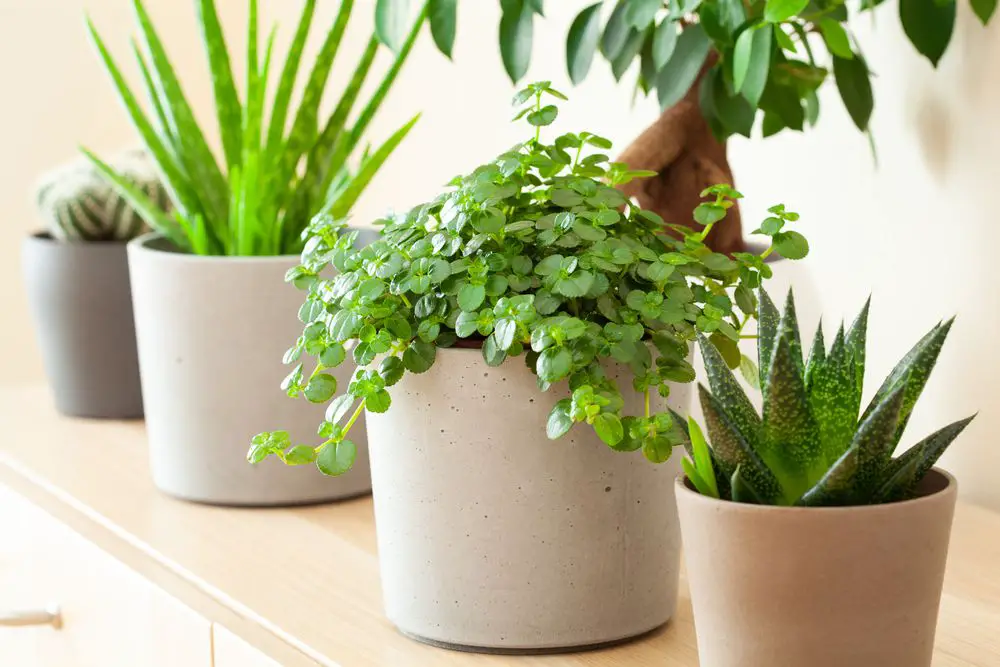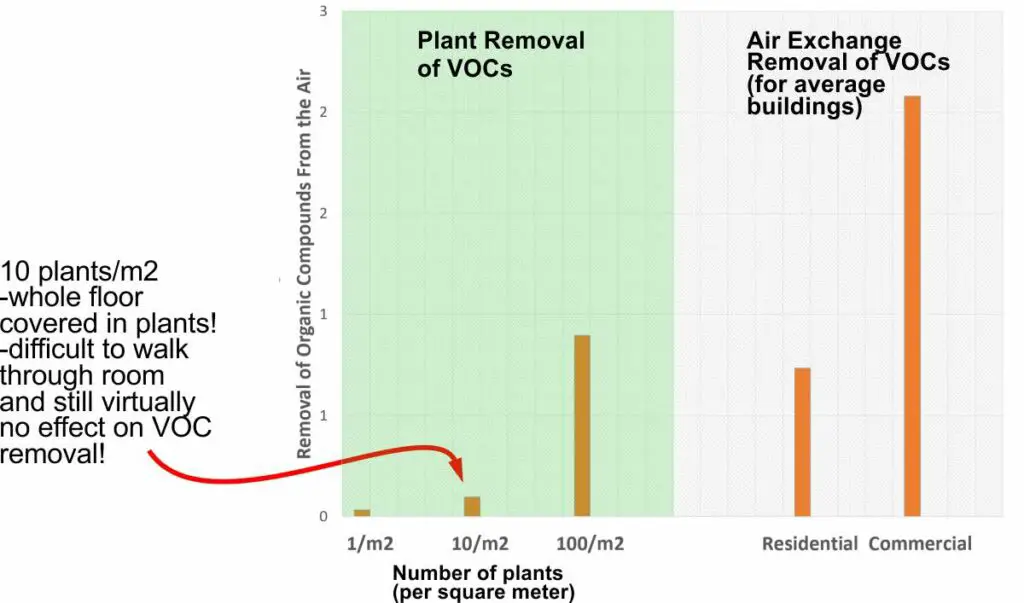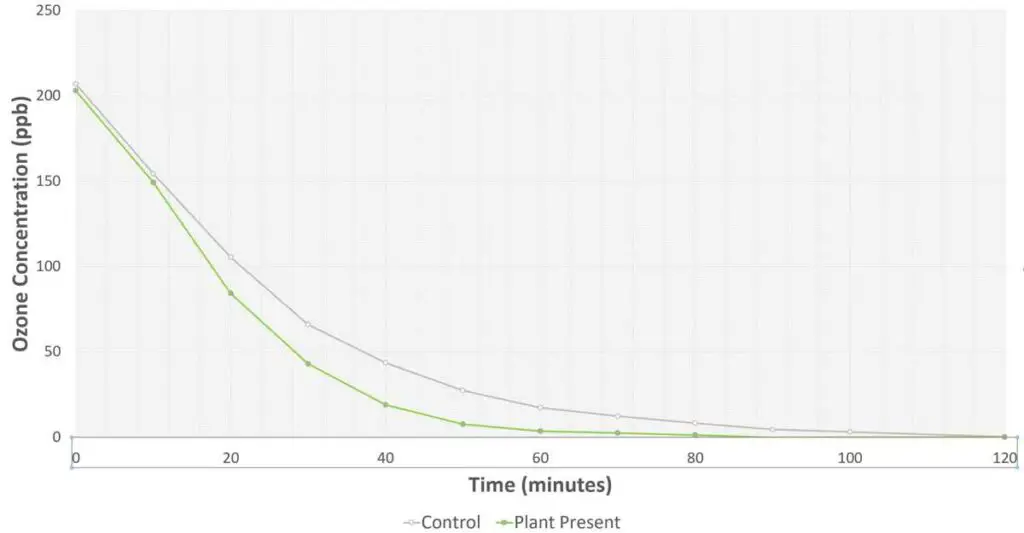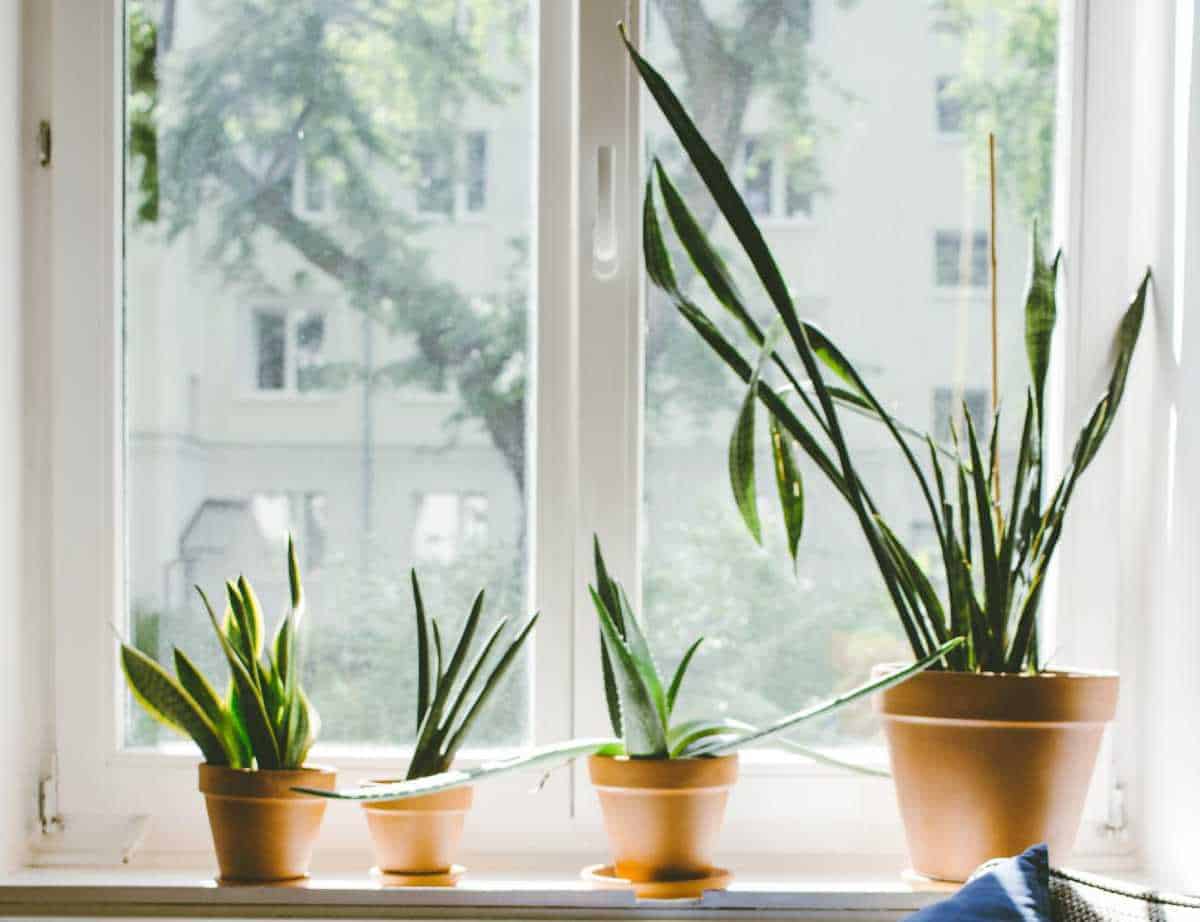Everybody likes the idea of using indoor plants for indoor air cleaning. It seems a natural solution to the problems with pollution we face. But do they really work? If they do really work, is it to such an extent that you should buy some? If so, which plants should you buy? There are some important and surprising conclusions-
Plants reduce most types of pollution to a very small extent. You will need 500-1000 plants in a room to see a significant improvement in pollution levels! Even then they do not deal well with particulate matter in the air.
There are however exciting developments with scientists genetically modifying plants to metabolize pollutants faster than they normally would.
In developed countries, it is been calculated that people spend between 80 and 90% of their time indoors so the indoor environment including pollution can potentially have an impact on health. Indoor air pollutants differ from outdoor pollutants. Outdoor pollutants do penetrate into our homes but are usually at a lower level inside than outside. Unfortunately, we increase the pollution in our homes by using products that release volatile organic compounds (VOCs) and particulate matter into the air, for instance, by burning candles. Other sources of VOCs are some furniture, building materials, personal care products and using unvented gas stoves. There can also be problems with other toxins-carbon monoxide, lead, asbestos and biological agents such as bacteria and fungi.
Plants Have a Minimal Effect on Particulate Pollution
Houseplants can reduce particulate pollution but to a tiny extent. The reduction in particulate pollution in this study was very slight and correlated with leaf area. It was similar for living or artificial plants. This reduction was considered being through the simple deposition of particles onto the leaves.
This is in contrast to HEPA air purifiers which have been proven to be very effective when used correctly.
Plants do have other uses in helping with particulate pollution, for instance, planting vegetation near highways can stop the drift of particulate matter into residential areas-this is really deflecting pollution rather than purifying the air.

Recent evidence suggests that Plants Remove an Insignificant Amount of Volatile Organic Compounds (VOCs) From the Air in Buildings
Volatile organic compounds are chemicals composed mainly of carbon, hydrogen and oxygen which have a low enough boiling point to be a gas at room temperature. As they are in the form of a gas we then breathe these chemicals in.
More than 300 different types of VOCs have been found in indoor air and plants can absorb these. This would include any essential oils that you wish to use. This was famously shown in a NASA paper published in 1989. In sealed chambers mimicking spacecraft, they were able to remove volatile organic compounds from the air with plants. However, they needed to combine the plants with an activated charcoal filter. The use of an activated charcoal filter was something of a clue that plants themselves were not adequate. In spite of this the “air purifying plant” became an urban myth.
Studies that had found that plants took up VOCs. This was when the plants were in small chambers under controlled circumstances. These results were then applied to an average office/residential setting to calculate the numbers of plants that would not be needed in this situation to reduce VOCs. The conclusions were disappointing. The plants would not take up a significant amount of VOCs unless the density of the plants was very high. The density needed was between 10 plants and 100 plants per square meter! At these sorts of densities, it would not even be possible to walk through the office, let alone get much work done.
The graph below summarizes some data from this study.

Illustration showing the effect of different plant densities on the removal of volatile organic compounds (left-hand side of illustration). This plant removal is compared to the removal of VOCs by average air exchange in buildings (right-hand side of illustration)
So a houseplant can improve indoor air quality, but each one only does so to a very small extent. So if you could live with a thousand pot plants in one room then you would see a significant reduction in VOC concentrations in the room. Of course, an air purifier with an activated charcoal filter will be much more effective.
It is also by no means certain that you would have enough VOC in the room to need any reduction over and above the normal air exchange in your home or office. So ideally the first thing would be to measure the VOC level in the room.
There are however exciting scientific developments in this field. A team at the University of Washington modified pothos ivy to remove chloroform and benzene from the surrounding air. They genetically modified the plants to produce a protein which transforms compounds into molecules which the plants can use for growth. This works very effectively in a test tube, but is not yet ready for use in the domestic setting. The scientists feel that the plants would have to be in an enclosure with a fan blowing air past their leaves. They are now modifying plants to break down formaldehyde.
Plants Reduce Formaldehyde and Xylene Levels-Bacteria in the Soil are as Important for This as the Plants Themselves.
Both formaldehyde and xylene are harmful substances. Formaldehyde is one form of volatile organic compound and is a fairly common indoor pollutant common sources are-
- building materials, especially pressed wood products made using adhesives
- furniture made from pressed wood
- smoking
- unvented fuel-burning appliances eg gas stoves, automobile exhaust
- household products
- cosmetics and personal products
- some synthetic fabrics (eg permanent press)
- paint and coating products
Formaldehyde is colorless pungent gas which smells like pickles and can irritate raise (throat as well as breathing at all levels above 0.1 parts per million. It may trigger asthmatic attacks, and there is evidence that people can develop a sensitivity to formaldehyde. In addition, formaldehyde is known to cause cancer in animals may cause cancer in humans.
Outdoor levels are usually 2.0ppb (parts per billion) but in a conventional homes levels are on average 20ppb.
Plants reduce formaldehyde and xylene concentrations in sealed chambers. The plant itself reduces the concentrations 40% and bacteria in the soil reduce the concentrations by approximately 60% . Another study has confirmed the importance of bacteria in the soil rather than the plant in reducing formaldehyde in the air. The Boston Fern was found to be the best of the two plants tested for reducing these chemicals in the air. Another study found that Osmunda japonica, Selaginella tamariscina, Davallia mariesii, Polypodium formosanum, Psidium guajava, Lavandula spp., Pteris dispar, Pteris multifida, and Pelargonium spp. were the most effective species for removing formaldehyde.
Plants Reduce Ozone Levels
Ozone is useful in the upper atmosphere at 6-30 miles up as it protects us from UV rays. Ozone is a toxic substance and when at ground level it can irritate our airways. This is a particular concern in asthmatics. It is formed from the interaction of pollutants, often from burning fossil fuel, with sunlight and it can then enter our homes.
Plants do reduce ozone levels in the home, although to a relatively minor degree as seen here-

This graph shows the reduction in ozone with time after ozone has been injected into a chamber. In the control group no plant was present. The experiment was then repeated with plants present.
As you can see, the reduction in ozone by the plant is definitely present. However, it is modest and by 120 minutes after injection of ozone into the chamber there is no effect as the ozone has virtually disappeared anyway. This situation was artificial as there was in one injection into the chamber and then measurements were taken. In the situation where there is ozone in a room, there will be a slight decrease if plants are present depending on the number of plants in the room. However, the experiment was in a small sealed chamber. The effect in a room will be much less because of the much greater volume of the room.
Carbon filters can reduce the level of ozone by 60 to 70%. So if you buy an air purifier, it would be worth getting one with carbon filters.
Sulfur Dioxide and Nitrogen Oxides
These are both harmful chemicals which are common air pollutants. Sulfur dioxide is produced by burning fossil fuels with sulfur in them. Nitrogen oxides are formed by cars burning diesel or gasoline and the burning of fossil fuels.
The amount of these chemicals in the atmosphere can be reduced by trees. Trees have been shown to lower the amount of sulfur dioxide in the atmosphere. The sulfur dioxide diffuses through pores in the leaves, usually on the undersurface of the leaf, and dissolves in water between the cells of the leaves forming acids which obviously can affect the plant but also effectively trap the sulfur dioxide . Sulfur dioxide is the main constituent/cause of “acid rain”.
Also, trees take up nitrogen oxides and turn them into amino acids, the building blocks of proteins.
It takes a considerable amount of vegetation to reduce the levels significantly and so indoor plants are unlikely to make a significant difference unless of course they’re very densely packed within the room.
Unfortunately, carbon filters In air purifiers are not good at removing these pollutants from the air.
Potential Problems With Growing Plants in the Home
If large numbers of plants are kept in the home then it has been recommended that an inch or more of small washed and gravel should be used to cover the surface of a potted plant. To reduce the exposed area of damp potting soil which encourages the growth of molds (fungi). The growth of molds on the soil could release allergens into the atmosphere. This may make respiratory function worse, particularly in asthmatics.
There is Little Evidence Some Plants Are Better Than Others
Various indoor plants have been suggested as particularly effective. Amongst these are spider plant, ficus, golden pothos, areca palm, gerbera daisy, zamioculcas zamiifolia or ZZ plant, money plant, plants from the dracaena genus, philodendron, rubber plant, peace lily, peace lily, epipremnum aureum “devils ivy”, snake plant, bamboo palm and English ivy. There is no good evidence for one house plant being markedly better in their overall effect on indoor air pollution. Some are slightly better than others for removing for instance formaldehyde as noted above. They will of course all remove carbon dioxide torm the air as they use it to grow.
Plants can Protect Communities From Pollution From Factories
Adding new plants and trees to vegetation near factories can reduce pollution levels in nearby communities by 27%.
Conclusion-Plants Are Not Recommended For Lowering Pollution Levels in The Home
So, house plants should not currently be relied on as a natural air purifier to reduce air pollution in the home. They have a small or negligible effect depending on the type of indoor air pollutant. Whereas air purifiers can be extremely efficient at reducing most sources of pollution in the air.
House plants are great to live with and so a few plants really help any home. These days artificial plants are very realistic. They may be best if there is someone in the home with asthma or respiratory condition. This avoids the possibility of fungal growth in the soil producing fungal allergens or mold spores which escape into the air and pollute it.
However, scientists are now genetically modifying plants to remove VOCs fairly effectively so the situation may change with time.

